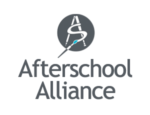Research
- General Research (46)
- High School Research (10)
This study looks at the factors contributing to PCAST (Parental Concern about After-School Time) and the consequences for both parents and employers.
This study from The National Center for Education Statistics within the Institute of Education Sciences provides a national profile of various types of formal after-school programs physically located at public elementary schools in 2008. These programs included stand-alone programs that focus primarily on a single type of service (e.g., only day care) and broad-based programs that provide a combination of services such as academic enrichment and cultural activities.
With support from MetLife Foundation, the Afterschool Alliance has published “Afterschool Innovations in Brief”, a compilation of four issue briefs examining critical issues facing children, schools and communities, and the vital role after-school programs play in addressing these issues. (May 2008)
Students with special needs may not always receive the resources they need to reach their full potential during the school day, but after school programs can offer additional activities more tailored to the individual needs of children. This brief examines the valuable role after school programs can play in the life of a child with special needs.
Respectfulness, positive behavior, self-confidence, and an interest in school are just a few traits kids can develop through participation in after school programs. Check out this issue brief to learn more about ways after school can help build character.
National Center for Public Policy and Higher Education (2003).
This project began with an enigma. In surveys, the parents of Hispanic high school seniors place enormous emphasis on higher education. By significantly higher percentages than the rest of the population, the parents of Hispanic high school seniors believe that a college education is an essential prerequisite for a good job and a comfortable middle-class lifestyle. However, this desire for higher education does not translate into reality. Compared to non-Hispanic whites or African-American students, Hispanic students are much less likely to obtain higher education degrees. There is clearly a gap, in other words, between what Hispanic parents say they want for their children, and the paths those children actually follow.
Southwest Educational Development Laboratory (2004).
Mike Schmoker offers practical advice for school improvement, presenting changes that are not costly or disruptive to high schools. The second article in this issue takes us to Irving, Texas, where Irving ISD has established successful smaller learning communities that are making a difference for students in this largely working-class community. Irving’s SLC program has a strong vocational component, which is also present at another school visited—Garza Independence High School in Austin, Texas. Garza is an alternative high school that is not a holding tank for troublemakers, as is often the perception for alternative schools. It is a school that accommodates individual differences and learning styles, a school where most of its graduates go on to college.
Based on both statistical analysis of employment data and extensive research involving over 300 faculty members from two and four year postsecondary institutions, managers, and high school educators, the American Diploma Project (ADP) benchmarks concretely define the English and math that graduates must master to succeed in credit-bearing college courses and high-performance, high-growth jobs. Key findings: employers’ and colleges’ academic demands for high school graduates have converged, yet states’ current high-school exit expectations fall well short of those demands.
Education Trust and partners Achieve and Fordham Foundation (2004).
This report, developed by the National Center for Education Statistics, contains statistics that address important aspects of the lives of youth, including family, schooling, work, community, and health. The report focuses on American youth and young adults 14 to 24 years old, and presents trends in various social contexts that may relate to youth education and learning.
The past year presented the afterschool community with many obstacles, most notably the economic crisis, but also many opportunities for growth. The year 2008 saw the celebration of ten years of 21st CCLC, one of the largest Lights On Afterschool rallies ever was held, and the Afterschool Alliance published the stories of so many whose lives have been transformed by afterschool in America’s Afterschool Storybook.
In 2007, funding for 21st Century Community Learning Centers increased for the first time since 2002. New research and polls show enduring and far-reaching support. More community leaders and policy makers are pledging their support for afterschool, and new dedicated state level funding streams are cropping up across the country. These positive developments, and more, as well as critical challenges that remain, are discussed in “2007 Afterschool Year in Review.” (January 2008)
This study finds that elementary students who were randomly assigned to attend the 21st Century Community Learning Centers after-school program were more likely to feel safe after school, no more likely to have higher academic achievement, no less likely to be in self-care, more likely to engage in some negative behaviors, and experience mixed effects on developmental outcomes relative to students who were not randomly assigned to attend the centers.










